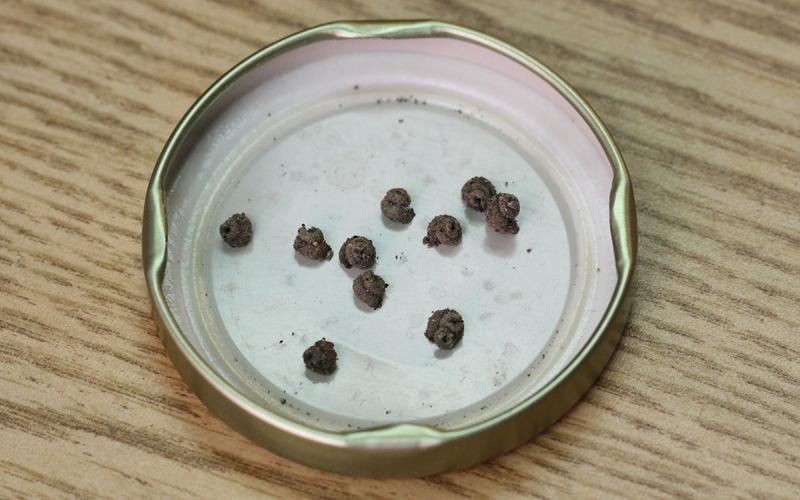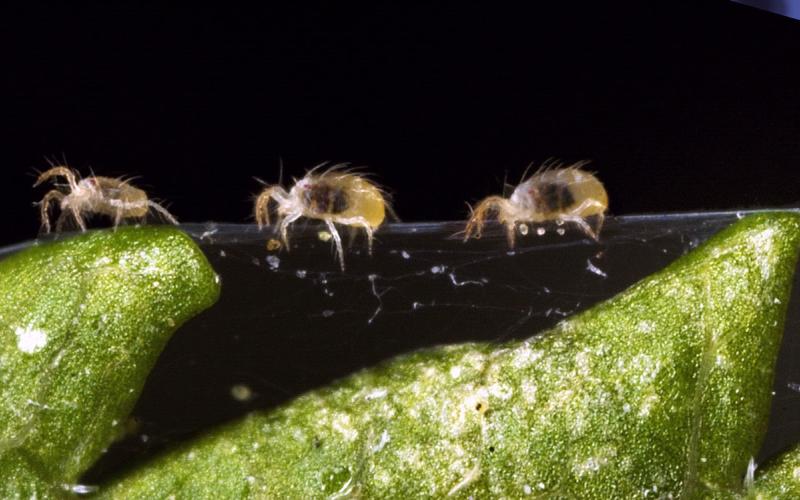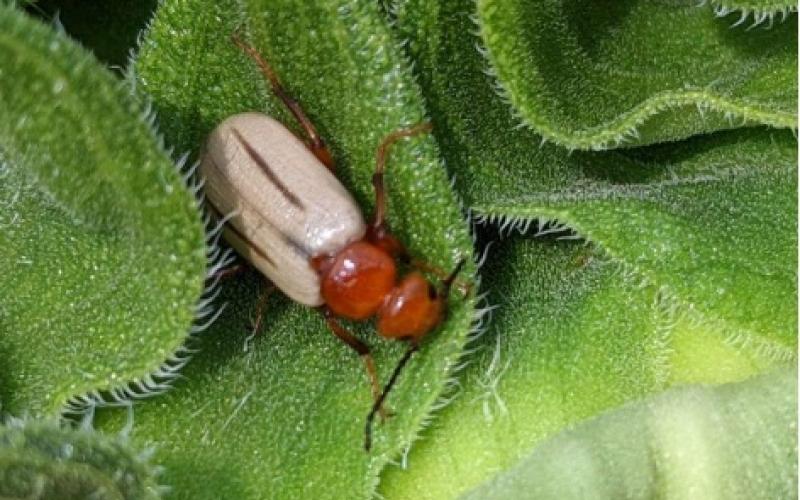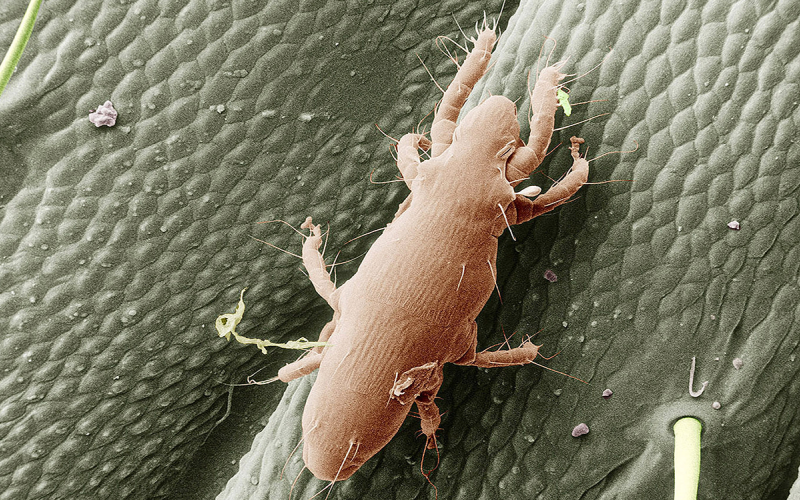Content by Patrick Wagner

Snailcase Bagworms in South Dakota
A unique insect that has been observed in South Dakota is the snailcase bagworm. Snailcase bagworms are wingless moths that spend their entire life in spiral-shaped “snail” cases, which they build around themselves using a combination of silk, soil particles and fecal matter.

Two-Spotted Spider Mite Populations Reaching Threshold
Drought conditions have continued and worsened in much of South Dakota during this season. As a result, two-spotted spider mite populations have been present in most fields and have recently had large population growth in soybean fields throughout the state.

Zonitis Bilineata on Sunflowers
While scouting sunflower last week we noticed beetles that were present throughout the field on the developing buds. These beetles weren’t feeding on the buds or the bracts that they were often on. So, what were they doing on the sunflowers?

Straw Itch Mites
Straw itch mites, also known as hay mites or grain mites, can be a major problem when present in hay or grain. The best way to avoid a straw itch mite infestation is to keep commodities at low moisture levels and bale straw when it is thoroughly dry.

Headclipping Weevils in Sunflower
Headclipping weevils have been active in some sunflower fields and in ornamental sunflower throughout South Dakota. Although the headclipping weevil is considered a minor pest of commercial sunflowers, it can cause a lot of problems for individuals trying to maintain sunflowers in their yards and gardens.

Redheaded Flea Beetles Clipping Silks
This week, redheaded flea beetles were observed in corn. Redheaded flea beetles will often strip only a layer of the leaves off corn, which results in windowpane holes, but the bigger issue is that they will also feed on corn silks.

Grasshoppers Already Moving Into Sunflower Fields
With grassland food sources being depleted earlier than usual due to drought, grasshoppers are moving into nearby crops in search of vegetation. In parts of western South Dakota, grasshopper nymphs have already been observed feeding on young sunflower plants.

Cicada Killer Wasps Are Active in South Dakota
The cicada killer wasps are active in South Dakota, which means cicadas are probably not far behind. As their name implies, cicada killer wasps use cicadas as a food source. They can present an impressive spectacle if you observe one carrying a paralyzed cicada from a tree.

Soybean Aphids Spotted in South Dakota
Soybean aphid populations have been observed in South Dakota. Although these populations are still very small, it is a good reminder that soybean aphid scouting should occur throughout the growing season to prevent population outbreaks and yield loss.

Start Scouting for Striped Cucumber Beetles
Striped cucumber beetles are showing up in gardens across South Dakota. If large populations are present in a garden, they can cause severe injury to squash, cucumbers, melons and other cucurbits if left unmanaged.